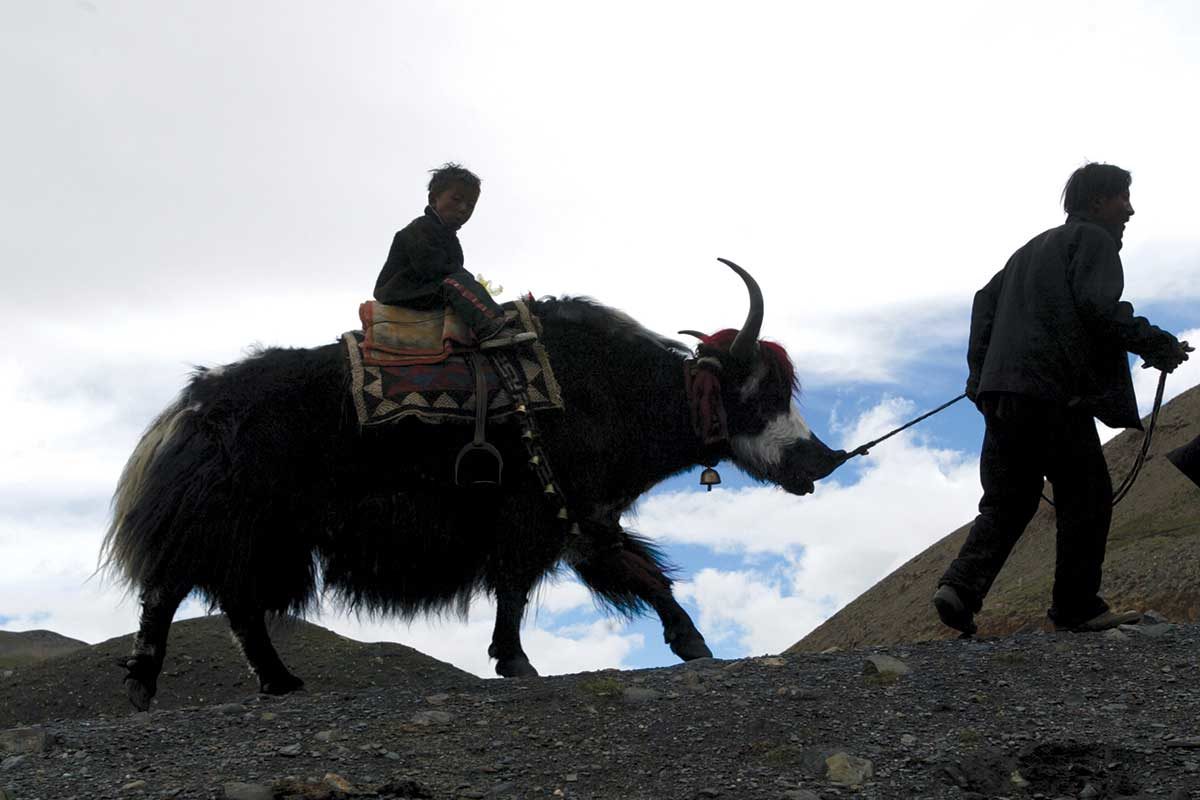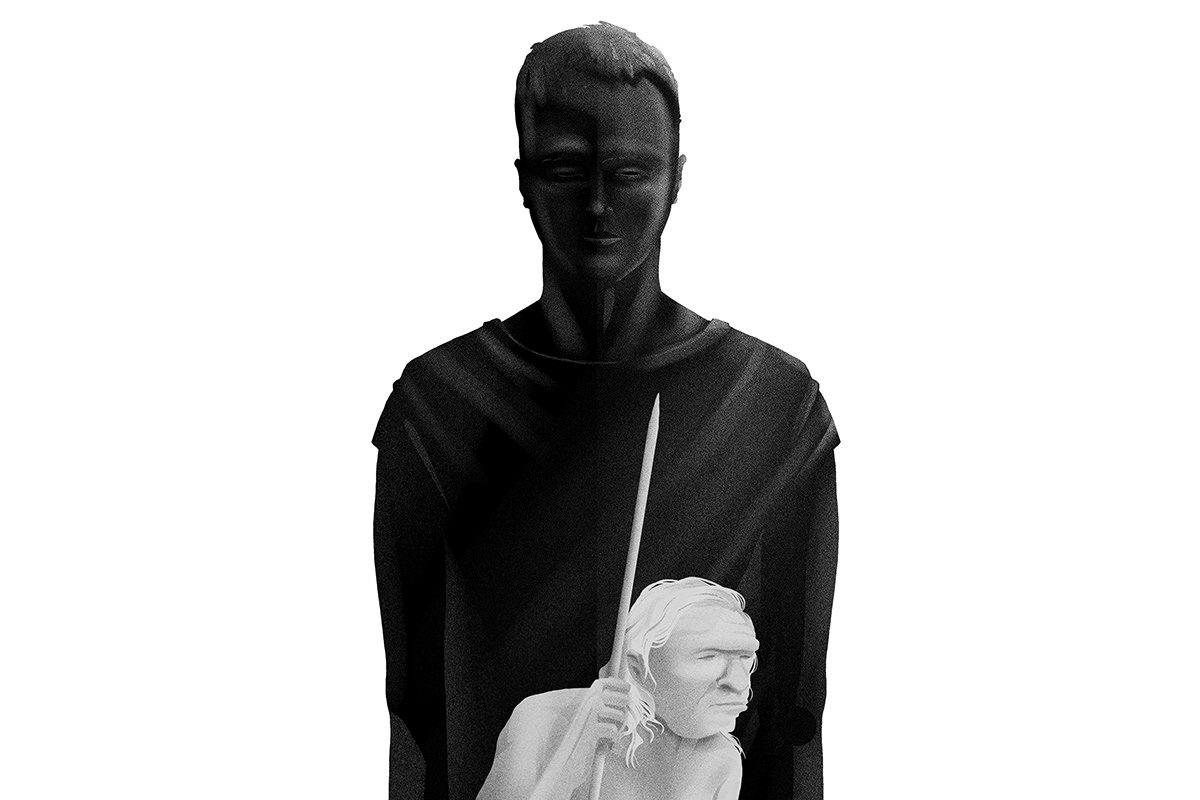Dozens of genes found in humans today have been traced to Neanderthals and Denisovans. They made their way into the human species when some of our direct ancestors mated with ancient lineages that are now extinct.
Interbreeding like this happened in Africa and in Eurasia, producing many human hybrids - you can read more about them here. Recent genetic decoding has revealed that it partly accounts for differences in our physical appearance - things like skin and hair colour - and affects our health.
Some of this "undead" DNA even helped us survive in places we were otherwise ill-equipped for. Here are four examples.
1. High-altitude survival
Perhaps the most dramatic evidence of modern benefits from ancient DNA is seen in Tibetans. Emilia Huerta-Sánchez at the University of California in Merced and her colleagues found that about 80 per cent of Tibetans carry a particular piece of Denisovan DNA. Most bits of Denisovan DNA are not present in more than 0.2 per cent of East Asians, so geneticists suspected the ancient DNA must have given its Tibetan owners significant advantages.
The stretch of ancient DNA overlaps with the EPAS1 gene, the Denisovan version of which seems to help people survive the low-oxygen conditions at high elevations. It's possible that Denisovans were adapted to life at altitude and passed the trait to humans. "But we'll never know because we cannot take physiological measurements of Denisovans," says Huerta-Sánchez.
2. The gift of immunity
The first Homo sapiens to arrive in Europe and Asia would have have encountered new parasites and pathogens, leaving them at risk from deadly diseases. Bumping into Neanderthals and Denisovans may have had very real advantages to these early explorers: modern Eurasians owe a significant portion of their immune system genes to these two ancient humans.
Several studies have compared these genes in living humans with the versions in our extinct cousins, and found remarkable similarities. In some populations in Papua New Guinea, for example, Neanderthal and Denisovan versions of the HLA-A immune system gene are nearly ubiquitous.
"It is not an overstatement to say that acquisition of these [gene versions] likely facilitated the health and survival of migrating bands of modern humans when they were first exploring and colonising Eurasia and other continents," says Peter Parham at Stanford University in California.
Comment: Interestingly, viruses have played a crucial role in human evolution:
3. Paler skin for northern skies
Benjamin Vernot and Joshua Akey at the University of Washington in Seattle have found that Neanderthal DNA may have contributed to the appearance of pale skins in some populations. Seventy per cent of people with European ancestry carry a segment of Neanderthal DNA on chromosome 9. This DNA spans a gene associated with pale skin pigmentation and freckling, and is absent in those with no European origins.
Sriram Sankararaman at the University of California in Los Angeles cautions that other factors could have contributed to the evolution of paler European skin colour. But if the Neanderthal DNA did play a role, it's easy to imagine how the trait might have been beneficial to early Europeans. Dark skin protects us from the harmful effects of UV radiation, but makes it harder to generate vitamin D at higher latitudes. Pale skin could have helped our species survive on less sunlight as it migrated north. "The vitamin D explanation is plausible - but still a hypothesis," says Sankararaman.
A similar genetic legacy remains in Asia: a chunk of Neanderthal DNA on chromosome 3 is found in about half the population. It overlaps with HYAL2, a gene involved in skin repair. Some studies show that HYAL2 responds to UV light exposure, which could suggest that the Neanderthal DNA helps repair skin damage from sunlight.
4. A tolerance to cold
One particular piece of Denisovan DNA found on chromosome 1 is present in nearly all indigenous Inuit Greenlanders. According to a recent study, the DNA contains two genes - TBX15 and WARS2 - and alters the way they are expressed in the body. TBX15 helps generate brown fat cells that generate heat when stimulated by cold temperatures, and it's thought that both genes may influence body-fat distribution.
It is possible that modern humans acquired this DNA from a lineage that had adapted to cold conditions. When they began moving into the polar regions, individuals with the ancient DNA would have had a much greater chance of surviving and passing the genes on to their children.
The work has not yet been published in a peer-reviewed journal, but it appears to suggest that there are many more ancient genetic gifts out there just waiting to be discovered.
To find more examples, we need to look at indigenous populations in other parts of the world, says Emilia Huerta-Sánchez at the University of California in Merced. "We just haven't sequenced other populations - such as those in the Americas."
- The blind spot, or optic disc, at the back of the eye is about 0.2 square millimetres smaller in those with one particular piece of Neanderthal DNA
- Neanderthal DNA spanning a group of genes called TLR may increase susceptibility to hay fever and common allergies - to cats and dust mites, for instance
- Certain segments of Neanderthal DNA increase risk of depression by 2 per cent, heart attack by 1.4 per cent and slightly increase risk of nicotine addiction
- The Neanderthal version of the BNC2 gene, found in 70 per cent of people with European ancestry, is linked to paler skin and freckling
- Increased risk of the autoimmune disease lupus is associated with a segment of Neanderthal DNA
- Some people might have a greater risk of type-2 diabetes because they carry a stretch of Neanderthal DNA that spans the SLC16A11 gene
- Increased risk of biliary cirrhosis, a kind of liver disease, has been linked to a segment of Neanderthal DNA
- One stretch of Neanderthal DNA is associated with people being slightly more prone to corns and calluses
- A mutation associated with red hair seems to have Neanderthal roots
- Trace amine-associated receptors help detect the smells of rotting fish, bad breath and vaginal infections, among others. We all have them, but for reasons we don't yet understand, the people of New Guinea disproportionally got theirs from Denisovans.





Comment: While interbreeding and genetics provide us with the potential for certain traits, it seems the role epigenetics plays in triggering them is also crucial: